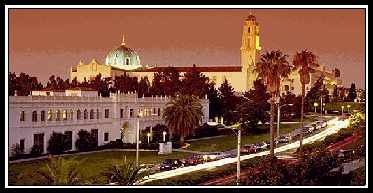 |
STATISTICS FOR MANAGERS
 |
| Spring 2017 |
|
Graduate (s) Business Administration 502 STATISTICS FOR MANAGERS |
|
||
|
| | HOME | SYLLABUS | CALENDAR | ASSIGNMENT | ABOUT PROF. GIN | |
|
Answers, Chapter 14 14.41 The marketing department of a large supermarket chain faced the business problem of determining the effect on the sales of pet food of shelf space and whether the product was placed at the front (=1) or back (=0) of the aisle. Data are collected from a random sample of 12 equal-sized stores. The results are in the following table:
* * * a. State the multiple regression equation that predicts sales based on shelf space and location Salesi = ß0 + ß1 Spacei + ß2 Locationi + €i * * * b. Interpret the regression coefficients in (a). Salesi = 130 + 7.4 Spacei + 45 Locationi b1 = 7.4 => Sales will increase by $7.40 for every 1 foot increase in shelf space, holding the location constant b2 = 45 => Sales will increase by $45 if the display is at the front of the aisle as opposed to the back, holding the amount of space constant * * * c. Predict the weekly sales of pet food for a store with 8 feet of shelf space situated at the back of the aisle. Sales = 130 + 7.4 (8) + 45 (0) = $189.20 * * * d. Perform a residual analysis on the results and determine whether the regression assumptions are valid. Heteroscedasticity Neither of the residual plots (for space or for place (location)) shows the fan shape that would be indicative of heteroscedasticity
Autocorrelation n = 12, k = 2, α = 0.05 => dL = 0.95, dU = 1.54
d = 2.38 => No autocorrelation Multicollinearity VIF < 5 => No multicollinearity 5 < VIF < 10 => Uncertain VIF > 10 => Multicollinearity VIF = 1.00 => No multicollinearity * * * e. Is there a significant relationship between sales and the two independent variables (shelf space and aisle position) at the 0.05 level of significance? H0: ß1 = ß2 = 0 H1: At least one ßj does not equal 0 α = 0.05, n = 12 FSTAT = (SSR / k) / (SSE / (n - k - 1)) α = 0.05 => F 2, 12 - 2 - 1, 0.05 = 4.26 => Reject H0 if FSTAT > 4.26 FSTAT = 28.53 > 4.26 => Reject H0, accept H1 * * * f. At the 0.05 level of significance, determine whether each independent variable makes a contribution to the regression model. H0: ßj = 0 H1: ßj ≠ 0 α = 0.05, n = 12
α = 0.05 => t12 - 2 - 1, 0.05/2 = 2.2622 => Reject H0 if tSTAT > 2.2622 or < -2.2622 ß1: tSTAT = 6.72 > 2.2622 => Reject H0, accept H1 ß2: tSTAT = 3.45 > 2.2622 => Reject H0, accept H1 * * * g. Construct and interpret 95% confidence interval estimates of the population slope for the relationship between sales and shelf space and between sales and aisle location. βj ≈ bj ± tn-k-1,α/2 Sbj 95% C.I. => t12 - 2 - 1, 0.05/2 = 2.2622 ß1 ~ 7.4 ± 2.2622 (1.1)
ß2 ~ 45 ± 2.2622 (13)
* * * i. Compute and interpret the meaning of the coefficient of multiple determination, r2. r2 = 0.86 => 86% of the variation in sales is explained by the multiple regression model with shelf space and location as independent variables * * * j. Calculate the adjusted r2. radj2 = 0.83 * * * m. The slope of shelf space with sales is the same regardless of whether the display is in the front or the back of the store. |